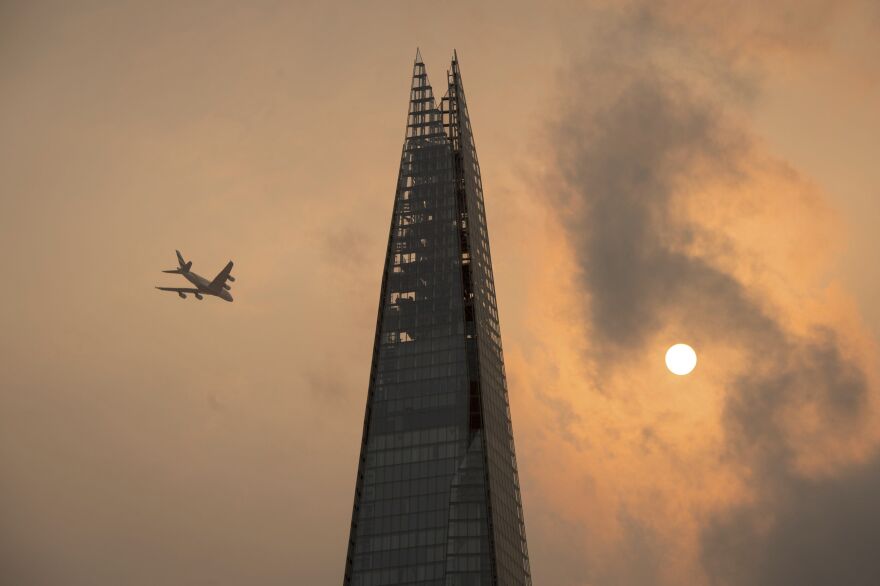Updated at 1:15 p.m. ET
The remnants of post-tropical cyclone Ophelia slammed parts of Ireland with wind gusts of more than 90 miles per hour, reportedly causing the deaths of at least three people and bringing strange red skies to the U.K.
"A woman died in Waterford County [Ireland] after a tree fell on the car she was in, according to local officials," NPR's Frank Langfitt reports from London. According to the BBC, a man "died near Dundalk, [County] Louth, after his car was struck by a tree" and another man was killed "in a chainsaw accident in [County] Tipperary while attempting to remove a tree downed by the storm."
Met Éireann, , warns of "violent and destructive wind" and says "some flooding expected also, due to heavy thundery downpours and storm surges in coastal areas."
As of Monday afternoon, Ophelia had knocked out power to about 360,000 customers in Ireland, according to ESB Networks, which operates the country's power system. The utility said that "fallen trees on overhead lines are responsible for most of the damage to the network."
Irish authorities have "ordered schools, courts and government buildings to remain closed before the storm's arrival," according to The Associated Press.
Schools in Northern Ireland are closed Monday and Tuesday owing to "the prolonged nature and potential severity of the storm," according to the Department of Education.
When your software isn't written for tropical storm force winds North of 60 degrees.https://t.co/2LHdzqtC96 pic.twitter.com/RR8KsGdI8R
— ᎬᎡᎥᏦ (@erikcorry) October 14, 2017
Flood warnings have also been issued in Cornwall, which lies on the southern coast of England.
Ophelia's location is already historic. As The Two-Way reported, Colorado State University meteorologist Philip Klotzbach noted that when the storm reached Category 3 status on Saturday, that made it "the farthest east (26.6W) an Atlantic major hurricane has existed on record." Ophelia weakened Sunday night and lost hurricane status, according to the U.K.'s Met Office.
The uniqueness of Ophelia's position was clear in a wind-speed-probability map issued by the National Weather Service. As Twitter user Erik Corry pointed out, at a certain position north and east of the British Isles, the map simply cuts off — suggesting it is not programmed to show tropical-storm-force winds in those areas.

The storm's winds brought warm air up through the U.K., causing unseasonably high temperatures. Those winds, according to the Met Office, "have also drawn dust from the Sahara to our latitudes and the dust scatters the blue light from the sun letting more red light through much as at sunrise or sunset."
The U.K.'s Royal National Lifeboat Institution is warning people to stay out of the sea. "Stormy conditions may be tempting to watch but big waves can easily knock you off your feet," RNLI's Matt Crofts said in a statement. "The sea is far more powerful than you think and your chances of survival are slim if you are dragged into the swell."
Ophelia is expected to track northeast into Northern Ireland and Scotland. Southeast England will very likely stay mostly dry, according to the Met Office.
Copyright 2021 NPR. To see more, visit https://www.npr.org. 9(MDAxODc1ODA5MDEyMjg1MDYxNTFiZTgwZg004))



